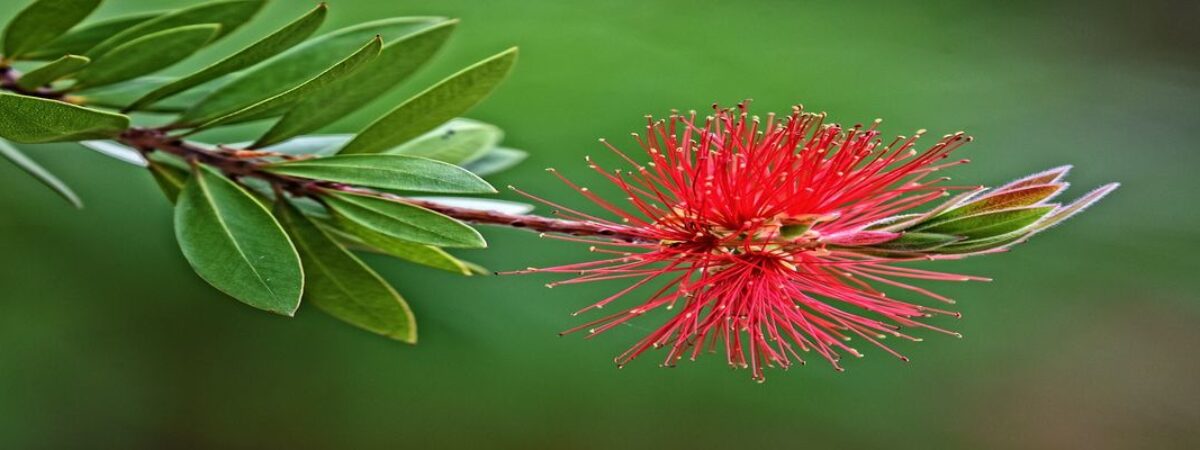Do you want an exotic flowering plant to enhance the beauty of your garden or planting region?
Then why don’t you go for a bottlebrush plant?
Bottlebrush or Callistemon is a very popular evergreen container plant that can transform your patio, garden, or balcony into a beautiful tropical oasis in the summer with its exotic inflorescences.
Plant Overview
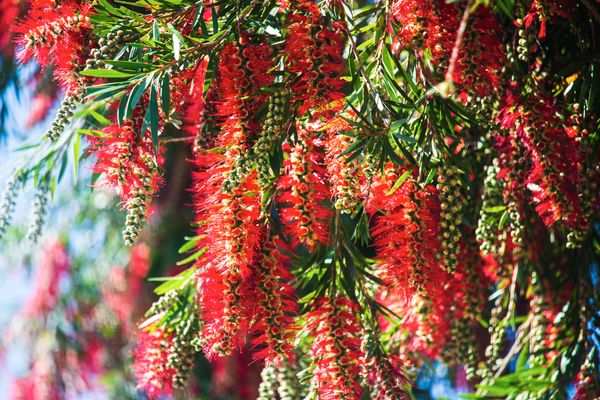
Bottlebrush plants, commonly named the Callistemon, are evergreen trees and shrubs that are native to Australia. Bottlebrush flowers that got their name for their resemblance to bottle brushes are long clusters of pollen-tipped filaments that grow cylindrically along a multi-trunked base.
The leaves of the plant are small and green in color, with white, green, purple, yellow, or red flower spikes in it depending on the cultivar.
Although bottlebrush plant can attain the height of twenty-five and thirty feet tall, there are also dwarf bottlebrush cultivars (like the “Little John” bottlebrushes) that will only grow around three feet tall and remain dwarf.
Bottlebrush plants are nontoxic for both humans and animals. So any gardener who is a pet lover can grow it in his home without a second thought.
Varieties of bottlebrush
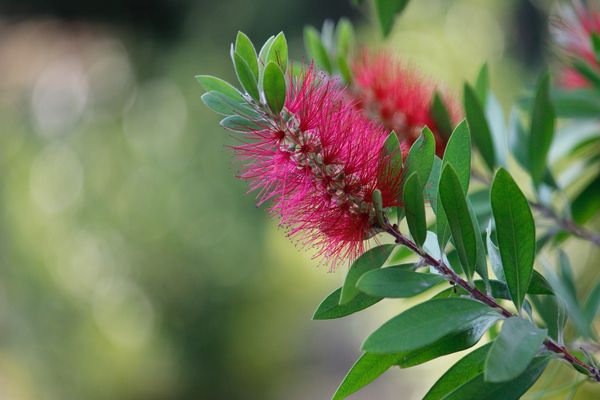
There are around more than forty species of bottlebrush shrubs and trees present on the earth that produce blooms of varying hues. Here are some of the popular varieties of bottlebrush plant that a gardener need to grow.
1. Crimson bottlebrush (Callistemon citrinus):
The crimson bottlebrush, commonly named the lemon bottlebrush or common red bottlebrush, is a popular variety that is scented like lemon when the leaves are crushed and can grow anywhere. This popular variety generally attains a height between three and twenty-five feet tall. Apart from that, these plants are drought-resistant.
2. Prickly bottlebrush (Callistemon brachyandrus):
This bottlebrush variety got its name for its prickly leaves. This shrub can grow up to the height of ten feet tall and thrives in warm, dry climates. This plant bears red, spiky flowers that are punctuated with bright yellow pollen.
3. Stiff bottlebrush (Callistemon rigidus):
The stiff bottlebrush grows erect and attains a height between ten and twenty feet tall. It thrives well in acidic, well-drained soil. These bottlebrushes are deer-resistant and it is also hardy against other pests or diseases.
4. Weeping bottlebrush (Callistemon viminalis):
Weeping bottlebrush plants got their name for their drooping or weeping like branches. This variety grows and attains a height between twenty and thirty feet tall with a fifteen-foot spread. It prefers to grow in loamy, sandy soil. This plant is both deer- and drought-tolerant.
5. White bottlebrush (Callistemon salignus):
Also named the willow bottlebrush, the white bottlebrush grows white brush-like flowers. These shrubs grow up to the height of twenty-five feet tall and fifteen feet wide. However, they require little pruning to grow abundantly and are especially useful for landscaping and hedges.
How to grow bottlebrush plants?
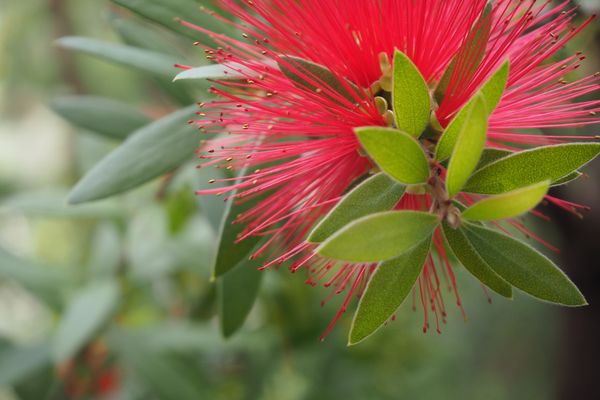
Bottlebrush plants can easily grow from the seeds. Following is the way to grow bottlebrush plants from seeds.
Collect your seeds
To grow a new bottlebrush plant, you can collect the seeds from an existing bottlebrush plant, that are contained inside of the woody fruits.
Collect these fruits and place these fruits inside a bag and leave them in a warm, dry location to dry. After a few days, the fruits will crack open, and you can have the seeds. Besides, you can also purchase seeds from a nursery.
Prepare your soil
Bottlebrush seeds are best when it is fresh. You can directly sow your seeds into your garden soil or can germinate them in a smaller pot before transplanting them into larger pots but before that, you need to prepare your soil best by loosening it a few inches deep, then thoroughly moistening the top. Don’t forget to make sure your planting area has good drainage.
Sow your seeds
After collecting the seeds, sow the seeds directly onto the surface of the soil and water them immediately after sowing. Keep your seeds and soil warm during the germination period by placing a plastic cover over the plant to conserve heat. Sprouting should take place within two weeks of sowing.
Keep your plant in a sunny location
Bottlebrush needs plenty of full sun, at least six hours of direct sunlight per day. So make sure to place your pot or container in a place where it receives full sun.
How to care for a bottlebrush?
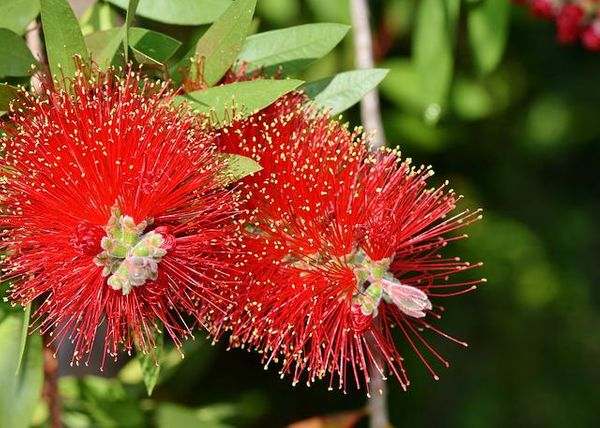
Although the bottlebrush doesn’t require a lot of care. however, taking proper care of your bottlebrush will surely reward you here is guidance for taking care of the plant.
with a lush abundance of flowers.
Water
Generally, young plants are unable to tolerate drought and require generous watering. If the root ball of the plant dries out, the plant reacts by producing fewer flowers and sheds its leaves.
To avoid this, you should check the soil moisture regularly. If the soil feels dry in the upper two centimeters, it should be watered. Besides, don’t overwater the plant and don’t let the water settle down.
If growing in a pot, It is recommended to choose a planter that has a hole in the bottom so that excess water can drain out. Waterlogging can eventually lead to root rot, which can significantly damage and kill the plant.
Fertilizer
In order to let your bottlebrush keep producing lots of beautiful flowers, it is recommended to fertilize your plant regularly during the growing season. For fertilization, you can use the Liquid Flower Food is very suitable for this purpose. This fertilizer reliably supplies the bottlebrush with all the key nutrients.
From April to September, it is suggested to fertilize your bottlebrush every one to two weeks with a little liquid fertilizer added to the irrigation water. For this, add three to five milliliters of liquid fertilizer per liter of water to the watering water.
How to propagate bottlebrush?
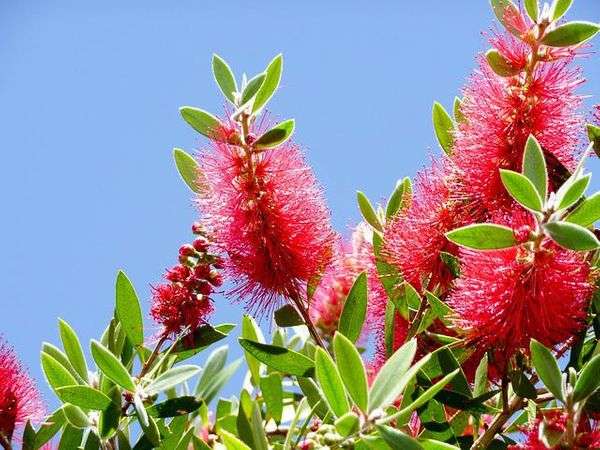
Bottlebrush can be propagated in two ways. It can be propagated through seeds and stem cuttings. You can propagate your plant from seed through the above bottlebrush planting procedure.
propagation of the bottlebrush via cutting methods generally succeeds better and faster than via seeds.
Besides, you can propagate it from stem cuttings by the following procedure.
- Take flowerless and minimally woody head cuttings of ten centimeter-long, ideally from the shoots. Remove all the lower leaves from the plant, leaving only the top pair of leaves.
- Make a cut at an angle with a sharp and sterilized knife to maximize the area where new roots will form. Add some rooting powder to the cutting to stimulate root formation.
- Place the cuttings in containers filled with the required potting soil and place the plant in bright and indirect sunlight.
- You can recognize successful rooting when you will notice that new leaves have formed.
- Then the seedling can be planted in normal soil for the bottlebrush and initially placed in a sheltered, sunny to partially shaded location.
Conclusion
As you read this article this far, you might have been aware of how to grow and care for the bottlebrush plant.
With elegant drooping branches, fuzzy flowers that bloom all throughout the summer, and attractive evergreen foliage, the bottlebrush is an excellent flowering plant that can brighten up the landscape.
So bring this exotic bottlebrush to your garden and can turn your garden into a space that’s the talk of the neighborhood with very little effort.
You may also like to read
How to grow and care for anthurium plants ? – The Best Step By Step Guide
How to grow and care for blanket flower – A step-by-step guide

